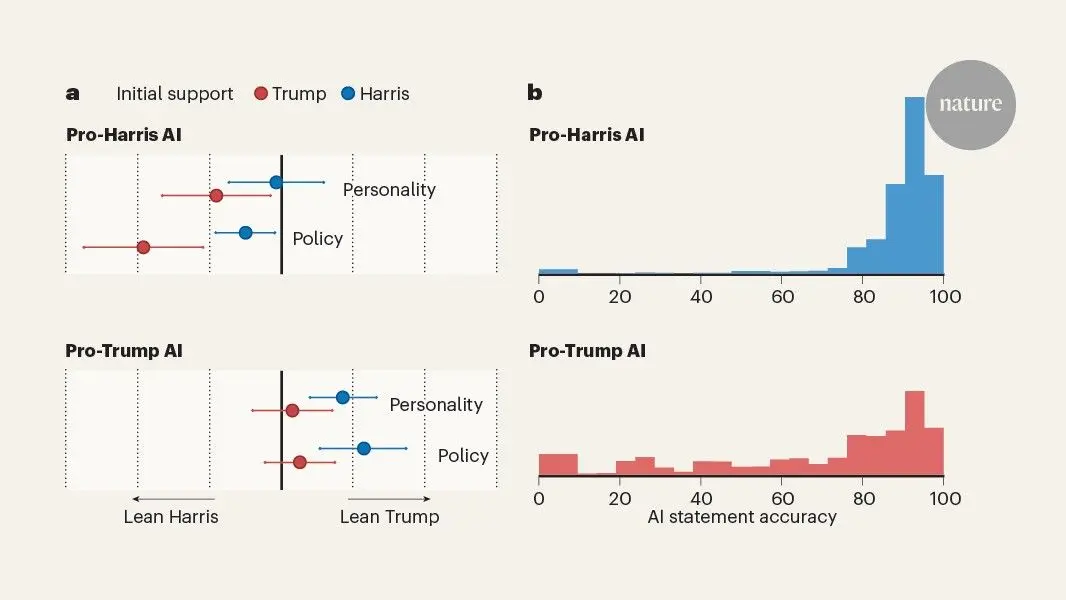NVIDIA Unveils RTX Kit: Ushering in the Era of Neural Rendering for Next-Gen Gaming Graphics
2 Sources
2 Sources
[1]
NVIDIA RTX Kit Shows How Neural Rendering Will Power the Next Visual Leap in Gaming
Alongside the new GeForce RTX 50 Series GPUs, CES 2025 also marked the debut of the NVIDIA RTX Kit, a new suite of neural rendering technologies that promises to empower game developers to deliver the next visual leap in graphics. The NVIDIA RTX Kit suite has vast applications, from accelerating ray tracing with AI to portraying much more realistic digital humans to rendering scenes that feature massive amounts of geometry. Let's begin with what's arguably going to be the biggest innovation. With the Blackwell architecture, NVIDIA is introducing the so-called RTX Neural Shaders. These are small neural networks that are meant to be injected into programmable shaders for various beneficial effects. With the upcoming RTX Neural Shaders SDK, game developers can train their game data and shader code on an RTX AI PC accelerated with NVIDIA Tensor Cores. During the training phase, the neural game data is compared to the output of the traditional data and refined over multiple cycles. There are currently three main applications for RTX Neural Shaders, all of which we previously covered from NVIDIA's research papers: RTX Neural Texture Compression, RTX Neural Materials, and RTX Neural Radiance Cache. RTX Neural Texture Compression is invaluable for easily compressing thousands of textures in less than a minute while also saving up to 7x more VRAM compared to traditional block-compressed textures, with no purported downside to quality. In the new tech demo, RTX NTC textures only occupy 80MB, whereas regular block-compressed textures require 520MB VRAM. RTX Neural Materials uses AI to compress complex shader code typically reserved for offline materials, delivering up to five times quicker material processing and enabling higher quality assets to be available in games. Lastly, AI is used in RTX Neural Radiance Cache to infer an infinite number of bounces after the initial one to two bounces, thus improving multi-bounce indirect lighting and performance. NRC has already been available for a while as part of the RTX GI SDK and will soon be introduced to RTX Remix and Portal with RTX. The RTX Neural Shaders and RTX Neural Texture Compression SDKs will be added to the NVIDIA RTX Kit later this month. Microsoft also announced today that DirectX will soon add support for Cooperative Vectors, providing accelerated performance for GeForce RTX GPUs when using RTX Neural Shaders. Bryan Langley, partner group program manager of Silicon, Media, and Graphics at Microsoft, stated: Microsoft is excited to partner with NVIDIA to catalyze this next generation of graphics programming by bringing industry-wide support for neural shading technology. DirectX will soon support Cooperative Vectors, which will unlock the power of Tensor Cores on NVIDIA GeForce RTX hardware and enable game developers to fully accelerate neural shaders on Windows. The NVIDIA RTX Kit also includes RTX Mega Geometry, which will debut in Remedy's Alan Wake 2 with a free update later this year. The CES 2025 demo video provided a preview of the technology, which aims to improve the ray tracing load in scenes with vast amounts of geometry, like in games powered by Unreal Engine 5's Nanite. According to NVIDIA, RTX Mega Geometry accelerates BVH building, enabling ray tracing of up to a hundred times more triangles than the current standard. It will be available later this month in the RTX Kit, and soon through the NVIDIA RTX Unreal Engine branch. RTX Neural Faces is the tool in the NVIDIA RTX Kit that takes a regular rasterized face with 3D pose data as input and infers a more natural face through a real-time gen AI model. The generated face is trained from thousands of offline generated images of that face at every angle, under different lighting, emotion, and occlusion conditions. The training pipeline can use real photographs or AI-generated images. The trained model is then optimized using NVIDIA TensorRT to infer the face in real-time. This is paired with the RTX Character Rendering SDK for hair and skin. With the new GeForce RTX 50 Series GPUs, NVIDIA added Linear-Swept Spheres (LSS), a GPU-accelerated primitive that reduces the amount of geometry required to render strands of hair. LSS uses spheres instead of triangles to match hair shapes more accurately. LSS enables ray-traced hair to be rendered with better performance and a smaller memory footprint. RTX Skin and Hair algorithms using the RTX Character Rendering SDK, which will be available later this month, just like the NVIDIA RTX Kit. The Hair algorithm will debut in Indiana Jones and the Great Circle with a free update coming soon. The Skin algorithm will be available through RTX Remix, too. Last but not least, NVIDIA also promised a big update to its Audio2Face technology. Truth be told, we weren't exceedingly impressed with its implementation in GSC Game World's STALKER 2 game; the AI didn't do a great job of delivering decent facial animations based on audio inputs. The brief new demo video looks a lot more expressive, though. According to NVIDIA, a new Audio2Face real-time diffusion-based architecture has been implemented to deliver more accurate and detailed lip synchronization, vivid emotions, and natural non-verbal responses.
[2]
Nvidia RTX 50-series and dev kit show that rasterization is old news and we're now firmly in the era of AI rendering
Goodbye rasterization, hello neural rendering. To complement the launch of the GeForce RTX 50-series at CES 2025, Nvidia has announced an updated RTX software kit for developers, with APIs for neural rendering -- shaders, materials, and texture compression, and more performance in ray traced games. The tech won't be in games just yet but at least we have a purdy video to see just what it can all do that rasterization can't. In September 2018, Nvidia released its first graphics cards to bandy the phrase 'AI' at the PC gaming market, in the form of the GeForce RTX 20-series. The Turing-powered GPUs in these cards sported new processing units, so-called Tensor cores and RT units, for doing matrix calculations and accelerating ray tracing mathematics. However, the only AI they actually did was frame upscaling for the DLSS (Deep Learning Super Sampling) algorithm, which appeared in February 2019. Now, with the latest Blackwell GPUs, AI is no longer a mere sidekick: it's the most important aspect of the whole processor and to allow developers to tap into its potential more easily, Nvidia has updated its RTX software kit with a raft of new tools. You've got neural shaders to "unlock new compression and approximation techniques for next-generation asset generation", neural texture compression for "8x VRAM improvement at similar visual fidelity to traditional block compression at runtime", and neural materials to "compress shader code of complex multi-layered materials for up to 8X faster material processing to bring real-time performance to film-quality assets." If that's not enough, there are APIs and tools for RTX Mega Geometry (which improves the performance of BVHs, bounding volume hierarchies, for ray traced games) and RTX Neural Faces, aka generative AI face rendering (for...err...nice looking faces?). Oh, and everything else that was already there, such as RTX Dynamic Illumination, as seen in Star Wars Outlaws, and Opacity Micro-Maps, which are used in Indiana Jones and the Great Circle. Nvidia is also working with Microsoft and other chip vendors to get support for something called cooperative vectors in DirectX. There's not a wealth of information about this topic right now but essentially it opens up more matrix operations in shaders, the key routines that power AI. Implementing this in DirectX means developers won't necessarily have to use a specific API to do some kind of neural rendering. Although the new RTX kit isn't publicly available, you can be sure that certain developers will already have access to it and I wouldn't be surprised if we see some of the big game releases of 2025 sporting neural rendering somewhere (much in the same way that DLSS and ray tracing was only used in a handful of key games when they first appeared). In the meantime, to tide us over until all of Nvidia's new tech pops up in a game, we have a tech demo called Zorah (as shown at the top of this story). "Built using the Nvidia RTX branch of Unreal Engine (NvRTX), Zorah features nearly half a billion triangles per scene, over 30,000 materials, over 2,000 particle lights and 1,500 textures to enable complex architecture and lighting to be visualized at cinematic quality." I really miss the golden age of graphics cards, the very late 1990s through to the mid-2000s, where every new GPU was promoted with a spectacular graphics demo and even though Nvidia still churns them out, they never seem to have quite the same wow factor anymore. The same is somewhat true of Zorah, though I dare say YouTube's compression algorithm isn't helping. That said, it's still very pretty. I just wish Nvidia showcased the full capabilities of its generative AI face rendering more, as the demo video for that is far too brief. Some people might lament the fact that other than the RTX 5090, we haven't seen a multi-generational leap in core counts or clock speeds with Nvidia's new graphics cards. That's almost certainly because it views traditional rendering techniques (colloquially known as rasterization) as having reached a plateau, in terms of how much better they can get and what level of GPU would be required to render it all even faster. I have no doubt that we're nearing the point where game rendering using AI and ray tracing will be visually perfect (to the eye, if not mathematically) and run at an acceptable performance. We're not there yet but we're probably not too far off that stage. Of course, all this is only going to be possible using the very latest GPUs which raises the question about where that leaves the majority of the PC gaming world that isn't using such a graphics card. Quite a few of the big games released in 2024 were entirely ray traced and in the case of Indiana Jones and the Great Circle, the only GPUs that can run that game have RT units inside them. With AMD finally joining Intel and Nvidia in having dedicated hardware for matrix operations, it probably won't be too far in the future that we'll see AI-exclusive games.
Share
Share
Copy Link
NVIDIA introduces the RTX Kit, a suite of neural rendering technologies set to revolutionize gaming graphics. The kit includes AI-powered shaders, texture compression, and advanced rendering techniques, promising significant improvements in visual quality and performance.

NVIDIA Introduces RTX Kit for Next-Gen Gaming Graphics
NVIDIA has unveiled its latest innovation in gaming technology: the RTX Kit. Announced alongside the GeForce RTX 50 Series GPUs at CES 2025, this suite of neural rendering technologies promises to deliver the next visual leap in graphics for game developers
1
.Key Features of the RTX Kit
The RTX Kit introduces several groundbreaking technologies:
-
RTX Neural Shaders: Small neural networks injected into programmable shaders for various effects. Developers can train these on RTX AI PCs accelerated with NVIDIA Tensor Cores
1
. -
RTX Neural Texture Compression: Compresses thousands of textures in under a minute, saving up to 7x more VRAM compared to traditional methods
1
. -
RTX Neural Materials: Uses AI to compress complex shader code, enabling higher quality assets in games
1
. -
RTX Neural Radiance Cache: Improves multi-bounce indirect lighting and performance by inferring an infinite number of bounces after the initial ones
1
. -
RTX Mega Geometry: Accelerates BVH building, allowing ray tracing of up to 100 times more triangles than current standards
1
.
AI-Powered Character Rendering
The kit also includes tools for enhancing character rendering:
-
RTX Neural Faces: Uses a real-time gen AI model to infer more natural faces from regular rasterized faces with 3D pose data
1
. -
RTX Character Rendering SDK: Introduces Linear-Swept Spheres (LSS) for more efficient hair rendering and improved skin rendering algorithms
1
.
Industry Collaboration and Support
Microsoft has announced upcoming support for Cooperative Vectors in DirectX, which will provide accelerated performance for GeForce RTX GPUs when using RTX Neural Shaders
1
2
. This collaboration aims to bring industry-wide support for neural shading technology.Related Stories
Implications for the Gaming Industry
The introduction of the RTX Kit signifies a shift in the gaming industry towards AI-driven rendering techniques:
-
End of Rasterization Era: Traditional rasterization techniques are reaching their limits, with AI and ray tracing becoming the new focus for achieving visually perfect rendering
2
. -
Performance and Quality Improvements: The new technologies promise significant improvements in visual quality, performance, and memory efficiency
1
2
. -
Exclusive AI Features: As these technologies mature, we may see the emergence of AI-exclusive games, potentially limiting compatibility with older hardware
2
.
Upcoming Implementations
Several games are set to showcase these new technologies:
- Alan Wake 2 will feature RTX Mega Geometry in a free update
1
. - Indiana Jones and the Great Circle will implement the RTX Character Rendering SDK for hair rendering
1
. - Audio2Face technology, with improved facial animations, is expected to appear in future titles
1
.
As the gaming industry embraces these AI-driven rendering techniques, we can expect a new era of visually stunning and technologically advanced games. However, this shift may also widen the gap between high-end and older gaming hardware, potentially impacting the accessibility of future titles for some players
2
.References
Summarized by
Navi
Related Stories
NVIDIA Unveils RTX Kit Update with Revolutionary AI-Powered Neural Rendering Technologies
11 Feb 2025•Technology

NVIDIA and Microsoft Collaborate to Bring Neural Shading to DirectX, Revolutionizing Game Graphics
13 Mar 2025•Technology

NVIDIA's Blackwell GPUs and RTX 50 Series: Revolutionizing AI for Consumers and Creators
16 Jan 2025•Technology








